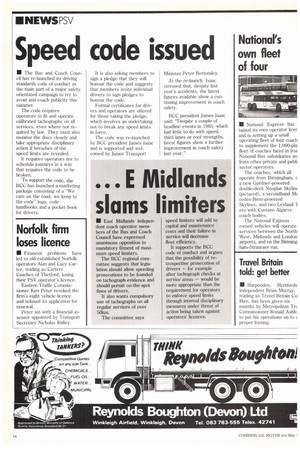Speed code issued
Page 14

If you've noticed an error in this article please click here to report it so we can fix it.
• The Bus and Coach Council has re-launched its driving standards code of conduct as the main part of a major safety orientated campaign to try to avoid anti-coach publicity this summer.
The code requires operators to fit and operate calibrated tachographs on all services, even where not required by law. They must also monitor the discs closely and take appropriate disciplinary action if breaches of the speed limits are revealed.
It requires operators not to schedule journeys in a way that requires the code to be broken.
To support the code, the BCC has launched a marketing package consisting of a "We care on the road, we keep to the code" logo, code handbooks and a pocket book for drivers. It is also asking members to sign a pledge that they will honour the code and suggests that members invite individual drivers to sign pledges to honour the code.
Formal certificates for drivers and operators are offered for those taking the pledge, which involves an undertaking not to break any speed limits in force.
The code was re-Launched by BCC president James Isaac and is supported and welcomed by Junior Transport Minister Peter Bottomley.
At the re-launch, Isaac stressed that, despite last year's accidents, the latest figures available show a continuing improvement in coach safety.
BCC president James Isaac said: "Despite a couple of headline events in 1985, which had little to do with speed, third lanes or roof strengths, latest figures show a further improvement in coach safety last year."
































































